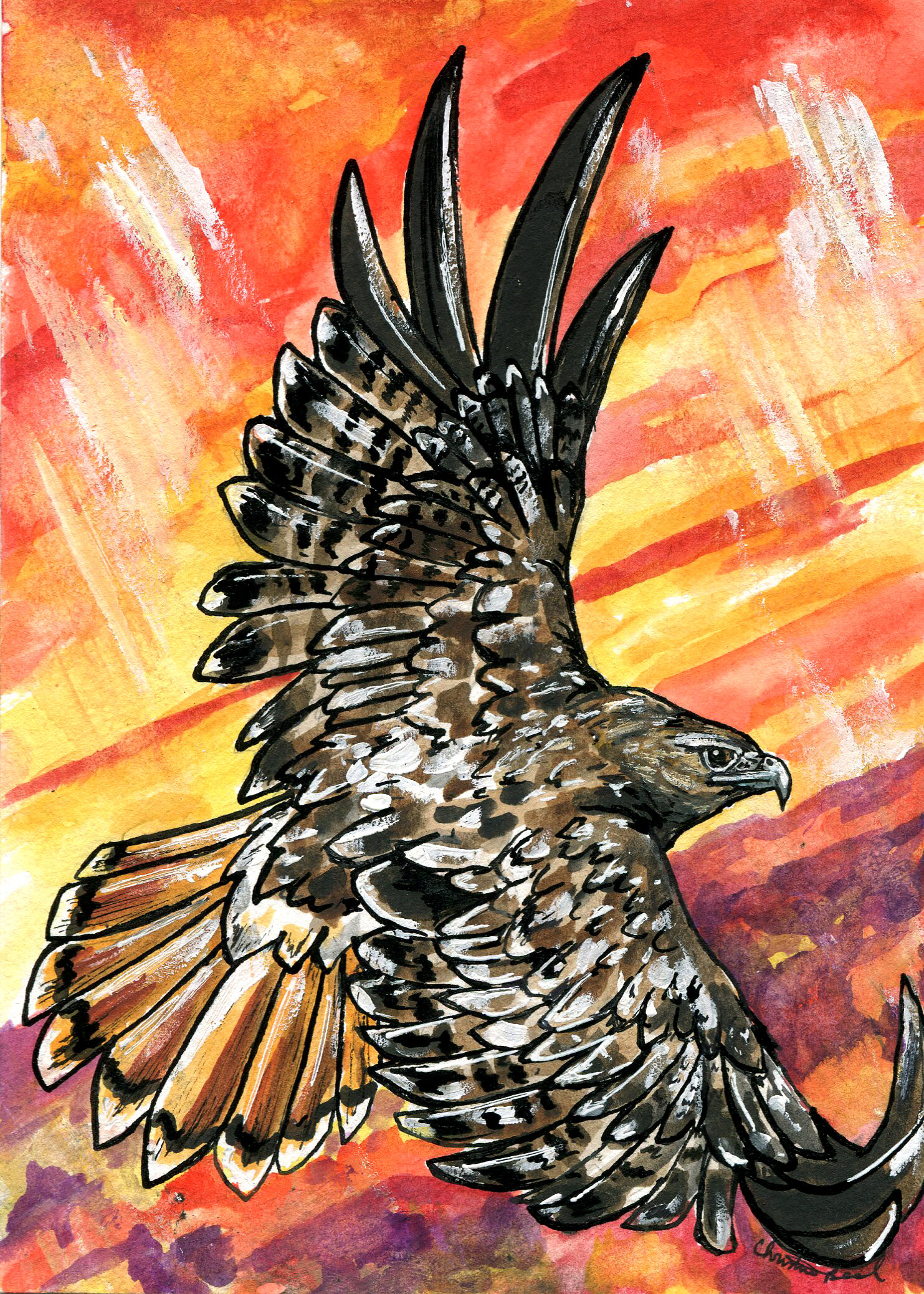Red-tailed Hawk, Buteo jamaicensis
On September 2, I started my first ever official bird job as a hawk watcher! For the next three months I will be counting migrating raptors passing through Quaker Ridge. Quaker Ridge Hawk Watch is one of many official hawk watch areas that contribute valuable data to scientists worldwide. In 1972, it was determined that Quaker Ridge provided one of the best viewing sites of hawks in the state, and volunteers and paid hawkwatchers have manned the site during the fall ever since.
The first week of September has seen few migrating hawks, but this has provided an amazing opportunity to spend time watching local raptors. In particular, I have been able to spend ample amounts of time watching Turkey Vultures and Red-tailed Hawks. Since I have already spent hours and hours with vultures as a college student, I spent the last week really focusing on the hawks. The Red-tailed Hawk is a bird that I see so often perched by the side of the road or soaring above my car as I drive. It’s red tail is so wonderfully diagnostic that it is easy to forget to consider other traits that help classify it as a Red-tail. This week, considering that most of the hawks I watched were so far away they looked like black specks, I got to go through Red-tailed Hawk identification boot camp.
While the red tail is a fantastic ID tool, it is unfortunately not always visible. On top of that, Red-tailed Hawks exhibit remarkable plumage variation throughout the species. There are dark morphs, light morphs, juveniles…they are not as simple as they should be, even with that red tail! I have learned a few other ways to nail down this bird when it is a mere speck on the horizon:
Juvenile birds have fantastic panels of light through their primaries that show through their primary feathers. When compared to the light white crescents that show through the wings of a Red-shouldered hawk, these wing patches seem like windows. I love this tool.
Adult birds do not have the white windows, but they do have a dark trailing edge along their wings. (Broad-wingeds have this too, but they also have black and white banding in their tails that Red-tails do not)
They soar in wide circles (unlike Broad-winged Hawks that make tight circles) and have powerful, shallow wingbeats.
Red-tails have a “Charlie Brown shirt” band across their belly. I usually just hear this described as a belly band, but my friend recently told me his Charlie Brown reference and I think that it’s way more fun.
In flight, it will occasionally hover in place like a kestrel.
Of course, even with all of these things in mind, identifying hawks at a distance can still be tricky. I have been studying The Crossley Guide to Raptors by Richard Crossley as well Hawks at a Distance by Jerry Ligouri, which are both a wealth of knowledge on working through this group of birds. Red-tailed Hawk migration through Quaker Ridge is at its peak in the second part of October, so until then I will be spending most of my time with the “local Tails,” as I have heard them called. Broad-winged Hawks are supposed to start picking up en masse over the next week, so that is who I will be focusing on next!
The Messenger, 24x18, Watercolor, Ink, Gouache. 2016



